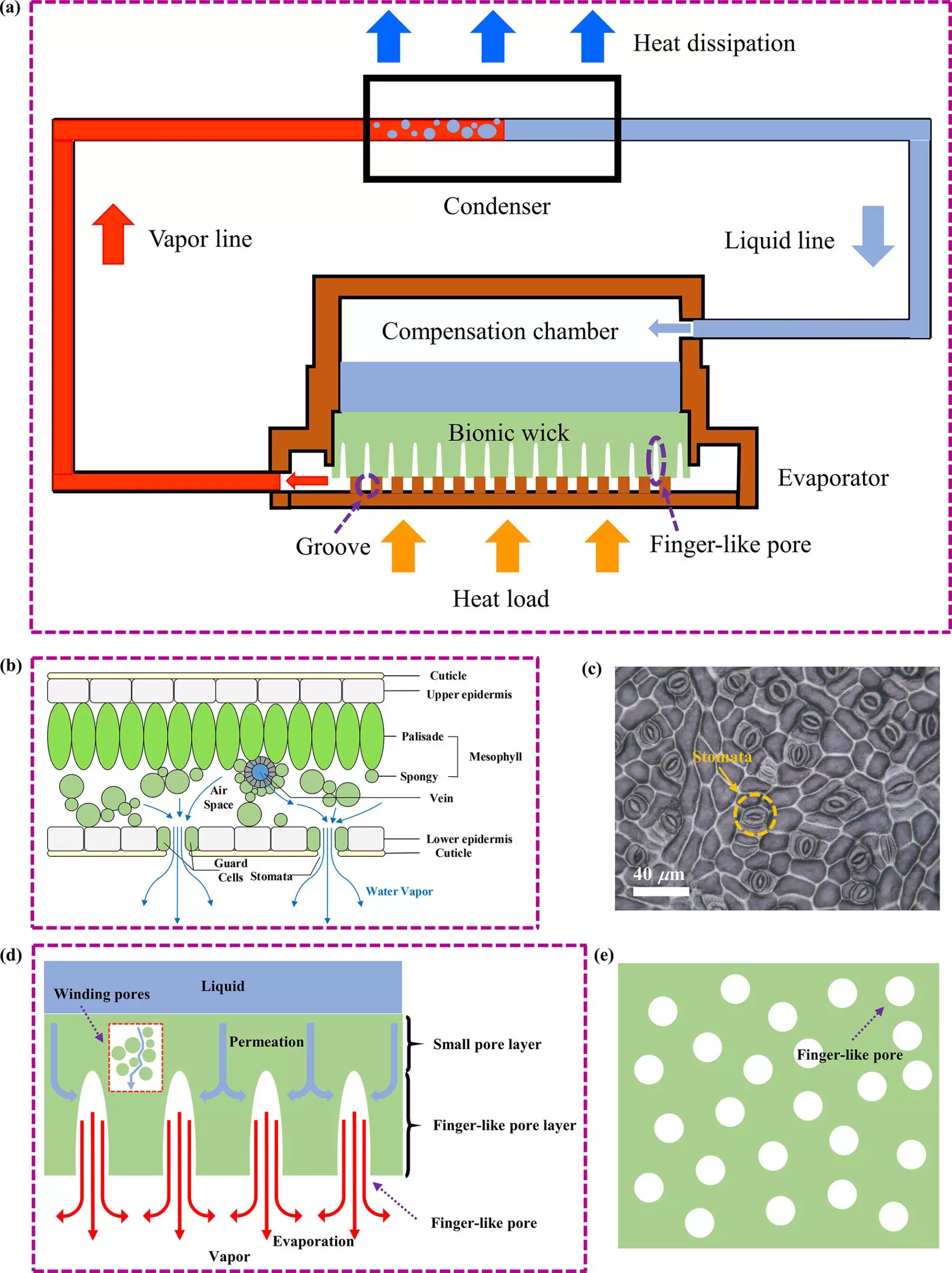The intersection of biological systems and engineering has always been a fertile ground for innovation. A notable advancement in this domain comes from a research team led by Prof. Ye Hong at the University of Science and Technology of China, where they have pioneered an alumina ceramic bionic wick inspired by the stomatal architecture found in plant leaves. This innovative design, recently published in the journal Langmuir, highlights not only the role of biomimicry in technology but also addresses the pressing need for enhanced cooling strategies in electronic components.
As electronic chips become increasingly sophisticated, the challenge of heat management grows concurrently. Enhanced functionalities lead to higher power consumption rates, necessitating innovative cooling techniques that can match this burgeoning demand. Loop heat pipes (LHPs) present a viable solution due to their remarkable ability to transfer heat without relying on mechanical parts. Their operational efficiency stems from both their high thermal conductivity and the principle of gravity-independent heat transfer. Yet, the intricate balance between flow resistance and capillary forces complicates the design process of the pore structures in these capillary wicks.
When designing porous structures for LHPs, engineers grapple with conflicting requirements: larger pores facilitate gas flow and reduce resistance, while smaller pores are essential for creating sufficient capillary forces that pull liquid toward evaporation sites. The challenge lies in harmonizing these two opposing needs to create an effective cooling system. Prof. Ye Hong’s team has adeptly navigated this complexity by taking cues from the natural stomatal arrays in leaves, which serve a similar function of gas exchange while optimizing liquid transport.
Breakthrough Design: The Bionic Wick
The team’s innovative solution employs a phase inversion tape casting technique to fabricate a bionic wick characterized by finger-like pores. These structures enhance the contact area between gas and liquid, facilitating the efficient removal of gas and minimizing resistance to mass transfer. This unique design allows for quicker expulsion of gaseous working fluids during operation while simultaneously ensuring that micrometer-scale pores maintain the necessary capillary action to draw liquid to the evaporation zone.
Proven Performance and Future Applications
Initial tests conducted on the LHP equipped with this bionic wick have demonstrated superior thermal and mass transfer capabilities compared to traditional designs. This breakthrough not only resolves the inherent trade-offs in pore size optimization but also sets the stage for more efficient thermal management solutions across various fields. The implications of this research extend into aerospace, aviation, and microelectronics, where high-power-density components are prevalent and require cutting-edge cooling technologies to sustain operational efficiency.
Prof. Ye Hong’s work represents a significant leap forward in cooling technology, showcasing the potential of biomimetic designs in engineering applications. By integrating natural inspirations into modern technological challenges, this research paves the way for smarter, more efficient cooling systems that align with the demands of future electronic innovations. The findings underscore the endless possibilities that arise when we look to nature for solutions, reinforcing the importance of interdisciplinary approaches in advancing technological frontiers.

